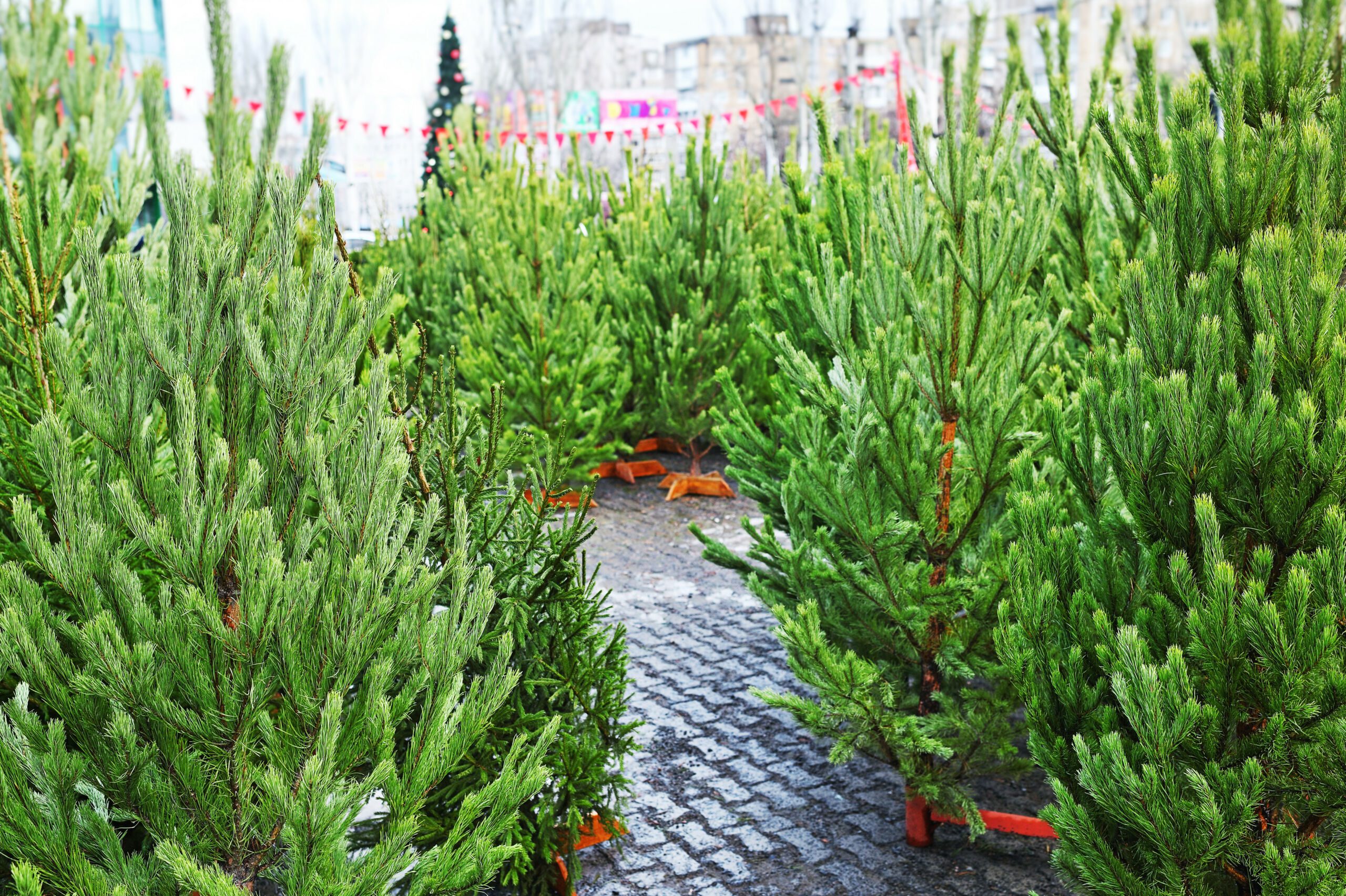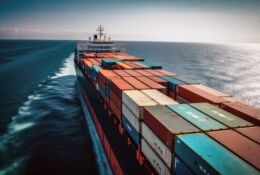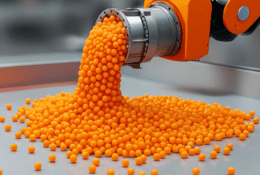Poland among the leading exporters of Christmas trees in Europe
19.12.2024
Christmas trees are an inseparable symbol of Christmas, which every year combines tradition with market realities. The production and trade in trees, both real and artificial, play an important role in many local economies. Poland is one of the largest producers and exporters of Christmas trees in Europe, and about a million trees are sold on foreign markets every year.

The real Christmas tree market
Real Christmas trees are very popular in Europe, North America and parts of Asia. In 2022, around 60 million trees were sold in Europe, an increase of 2 percent compared to 2021. Poland, as one of the leading producers of real Christmas trees in Europe, exported over one million units in 2023, which generated revenues of PLN 41 million (EUR 9.6 million). This makes Poland one of the leading countries exporting Christmas trees in Europe (1. Place – Denmark, 2nd place – depending on the source Germany or Poland).
The production of real Christmas trees in Poland is based on plantations located mainly in the northern and western parts of the country. Popular species are Caucasian fir, Norway spruce and pine. Caucasian fir, despite its higher price, is becoming increasingly popular due to the durability of its needles and aesthetic appearance.
In 2023, the market for real Christmas recorded a slight decrease in sales by 1 percent compared to the previous year. The reason could have been higher transport and production costs, resulting from inflation and increased fuel prices. At the same time, there is a growing environmental awareness among consumers, who are more likely to choose trees with ecological certificates, such as FSC (Forest Stewardship Council), which guarantee sustainable forest management.
The main recipients of Polish Christmas trees are Germany, France, the Czech Republic, as well as the Scandinavian countries.
The artificial Christmas tree market
The production of artificial Christmas trees is dominated by China, which supplies over 80 percent of this type of trees to the global market. The production process is based on materials such as PVC and steel, which makes them durable, but at the same time generates a higher carbon footprint. In 2022, the global market for artificial Christmas trees was valued at USD 2.2 billion, of which Europe accounted for 35 percent of demand. About 1.5 million artificial Christmas trees were sold in Poland, which was an increase of 5 percent compared to 2021.
In 2023, interest in artificial Christmas trees increased by another 3 percent, mainly due to growing environmental awareness. Many companies now offer recycled models that have gained recognition among consumers. Modern technologies allow for the production of trees from plastics derived from PET waste, which significantly reduces their negative impact on the environment. Such Christmas trees, although more expensive, are becoming more and more popular in Western European countries, where consumers are increasingly choosing products in line with the idea of sustainable development.
Imports of artificial Christmas trees to Poland increased by 7 percent in 2023, reaching a value of EUR 50 million. China remains the largest supplier, but more and more local companies are undertaking production on a smaller scale, focusing on the premium segment (luxury designer Christmas trees).
Compared to real Christmas trees, artificial trees can be used multiple times. However, critics point to their higher environmental cost, related to production and transport. Experts emphasize that the ecological efficiency of an artificial Christmas tree increases only after several years of use, so they are environmentally friendly only if they are not replaced too often.
Poland, despite China’s dominance in this industry, has a chance to increase its share in the production of artificial Christmas trees, especially in niche and ecological segments. Companies producing trees from biodegradable materials or recycled plastics can count on an increase in interest both on the domestic and international markets.
Ecological comparison: Real vs. artificial
The choice between a natural and artificial Christmas tree is more and more often dictated by ecological considerations. Research shows that:
- Real Christmas trees: When grown and composted responsibly, real Christmas trees have a smaller carbon footprint compared to their artificial counterparts. On average, the greenhouse gas emissions associated with growing and transporting a real Christmas tree are around 3.1 kg of CO2 per tree. What’s more, these trees can act as carbon absorbers during growth on plantations, further reducing their environmental impact. An important aspect, however, is the responsible origin of the trees – FSC certificates guarantee that the Christmas tree comes from a legal and sustainable plantation.
- Artificial Christmas trees: The production of artificial Christmas trees generates much higher emissions – on average about 40 kg of CO2 per tree. Materials used in production, such as PVC or steel, are difficult to recycle and have a long decomposition period. These Christmas trees need to be used for at least 10-15 years so that their carbon footprint equals that of their natural counterpart. However, the development of technology allows the production of trees from recycled materials, which reduces their negative impact on the environment. Some companies offer Christmas trees made of 100% recycled PET plastics.
- Length of use: A key factor in assessing the environmental performance of Christmas trees is their length of use. Natural trees are used once, but can be processed into compost or biomass. Artificial Christmas trees, while reusable, become problematic when they are replaced every few years, which increases plastic waste.
- Consumer impact: More and more consumers are making informed purchasing decisions. They choose real trees from local plantations or artificial Christmas trees produced in a more sustainable way. Initiatives involving the rental of live Christmas trees, which return to the plantation after Christmas, are gaining popularity, especially in large cities.
Challenges and prospects for the future
Climate change is an increasing challenge for the real Christmas tree market. Extreme weather conditions, such as droughts and heavy rainfall, significantly affect the quality and quantity of available trees. In Europe, droughts in 2023 caused production to fall by about 3 percent compared to the average of the last five years.
At the same time, rising production costs are a problem for both real and artificial Christmas tree manufacturers. Inflation and higher energy and material prices are affecting the final prices of trees available to consumers. In Poland, the average price of a real Christmas tree in 2023 increased by 10 percent compared to the previous year. A similar trend can be seen in the segment of artificial Christmas trees, where rising production and transport costs are driving up retail prices.
The market also reacts with innovations in the production of artificial Christmas trees. In 2023, trees made entirely of recycled plastics appeared on the market, which met with great interest from consumers in Western Europe. Such Christmas trees, although more expensive, are perceived as more environmentally friendly and fit in with the growing trend of sustainable consumption. Combined with modern production and recycling technologies, they can become a key element of the future of the artificial Christmas tree market.
Sources:
- Statista, Main suppliers of Christmas tree lights globally in 2023, based on value of exports, December 2024
- INN Poland, Choinki do Chin, bombki do USA, zabawki do Niemiec. Polska to bożonarodzeniowa potęga, December 2023;
- Money.pl, Problemy plantatorów choinek przed świętami. Takie drzewka trafiają do Polski, December 2023;
- WWF Polska, Sztuczna czy naturalna choinka? Która jest bardziej ekologiczna?, December 2024.
- Everything
- News (296)
- Events (172)
- Get Support (83)
- Polish companies (1195)
-

Zakład "RPOL" Polit Roman
Electronics and household appliancesDomestic appliancesElectronicsAluminium and articles thereofCopper and articles thereofIron, steel and articles thereofOther metals and articles thereofRubber and articles thereofPlastics and articles thereofMachinery and parts thereofIndustrial machinery and mechanical appliances and parts thereofMeasuring instruments and apparatus and parts thereofAgricultural machinery and parts thereofOther instruments and apparatusElectromechanical appliances and parts thereofShow allShow more Show lessRPOL is present from 1959, since then we are producing plastic items and metal elements in Mielec. We are producer of: Polish multicooker Speedcook, thermostatic heads, welding assemblies also pipe centering clamps, temperature probes and acumulators disconnectors. We can support you in both unit production and small / medium / large serial production both in metal parts and plastic elements. Our Toolhouse and contructor biuro can design elements and tooling for production in our company.
 Article
ArticleEconomic slowdown in Europe weakens the inflow of investments to Poland
Today we are a leader

SOUNDBASE Bartosz Ruszkowski
Electronics and household appliancesDomestic appliancesElectronicsIT and telecommunication equipmentMachinery and parts thereofIndustrial machinery and mechanical appliances and parts thereofMeasuring instruments and apparatus and parts thereofAgricultural machinery and parts thereofOther instruments and apparatusElectromechanical appliances and parts thereofOther goodsShow allShow more Show lessThe casebase.pl company produces and sells transport boxes, housings and custom-made structures used, among others, in the AV, music, event and other industries. We have the latest technology for the production of polyurethane inserts, thanks to which we can reproduce complex shapes and implement projects tailored to individual needs. In addition, we are a manufacturer of stage platforms and accessories.

GLOBCARGO GAMES PROSTA SPÓŁKA AKCYJNA
Show more Show lessGlob Cargo Games is a young independent Polish studio creating modern board and mobile games that combine digital innovation with traditional play. We use new technologies such as AI, VR, and interactive mobile tools to build engaging experiences, developed together with players who help us shape creative and evolving worlds.
-
 Event
EventPolish Logistics Day
The Embassy of the Republic of Poland in Prague cordially invites you to participate in the “Polish …
 Event
Event3rd International African Congress
The Congress will take place in Toruń (Poland) on February 25-27, 2026
-
 Institution
InstitutionThe Investor Tax Service Center
The Investor Tax Service Center is a unit operating within the Ministry of Finance
 Institution
InstitutionPolish Investment and Trade Agency (PAIH)
The Polish Investment and Trade Agency (PAIH) is the partner of first-resort for entrepreneurs when …
-

Zakład "RPOL" Polit Roman
Electronics and household appliancesDomestic appliancesElectronicsAluminium and articles thereofCopper and articles thereofIron, steel and articles thereofOther metals and articles thereofRubber and articles thereofPlastics and articles thereofMachinery and parts thereofIndustrial machinery and mechanical appliances and parts thereofMeasuring instruments and apparatus and parts thereofAgricultural machinery and parts thereofOther instruments and apparatusElectromechanical appliances and parts thereofShow allShow more Show lessRPOL is present from 1959, since then we are producing plastic items and metal elements in Mielec. We are producer of: Polish multicooker Speedcook, thermostatic heads, welding assemblies also pipe centering clamps, temperature probes and acumulators disconnectors. We can support you in both unit production and small / medium / large serial production both in metal parts and plastic elements. Our Toolhouse and contructor biuro can design elements and tooling for production in our company.

SOUNDBASE Bartosz Ruszkowski
Electronics and household appliancesDomestic appliancesElectronicsIT and telecommunication equipmentMachinery and parts thereofIndustrial machinery and mechanical appliances and parts thereofMeasuring instruments and apparatus and parts thereofAgricultural machinery and parts thereofOther instruments and apparatusElectromechanical appliances and parts thereofOther goodsShow allShow more Show lessThe casebase.pl company produces and sells transport boxes, housings and custom-made structures used, among others, in the AV, music, event and other industries. We have the latest technology for the production of polyurethane inserts, thanks to which we can reproduce complex shapes and implement projects tailored to individual needs. In addition, we are a manufacturer of stage platforms and accessories.

GLOBCARGO GAMES PROSTA SPÓŁKA AKCYJNA
Show more Show lessGlob Cargo Games is a young independent Polish studio creating modern board and mobile games that combine digital innovation with traditional play. We use new technologies such as AI, VR, and interactive mobile tools to build engaging experiences, developed together with players who help us shape creative and evolving worlds.

P.W. VIKKING KTS Sp. z o.o.
Renovation and construction materialsShow allShow more Show lessVIKKING specializes in the production of innovative composite exterior doors and PVC windows of superior quality and energy efficiency. Our products stand out for their durability, security, and full customization — each element is made according to the client’s individual specifications. We hold numerous patents that make our solutions unique. We create joinery that combines design, comfort, and reliability.
The Export Promotion Portal uses cookies to make it easier for users to use the website and for statistical purposes. If you do not block these files, you agree to their use and saving in the memory of your computer or other device. Remember that you can change your browser settings to block the storage of cookies. More information can be found in Privacy Policy and Terms and conditions.






